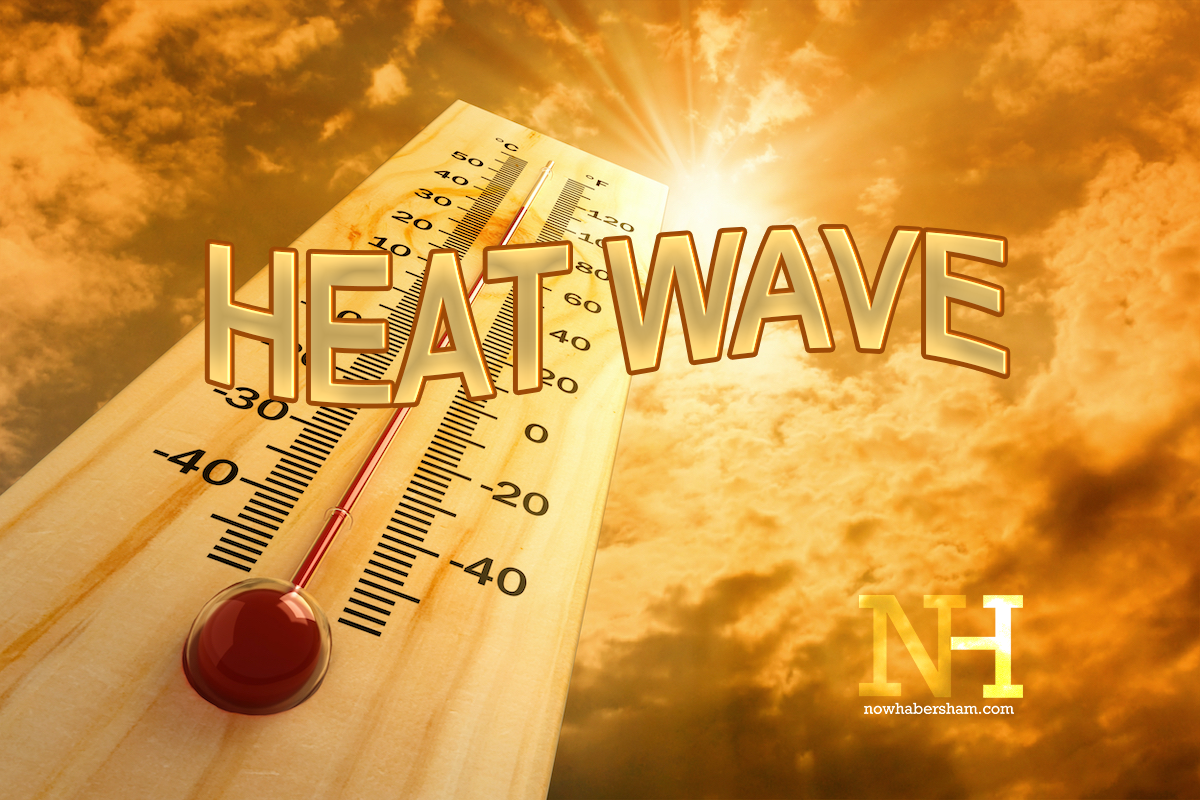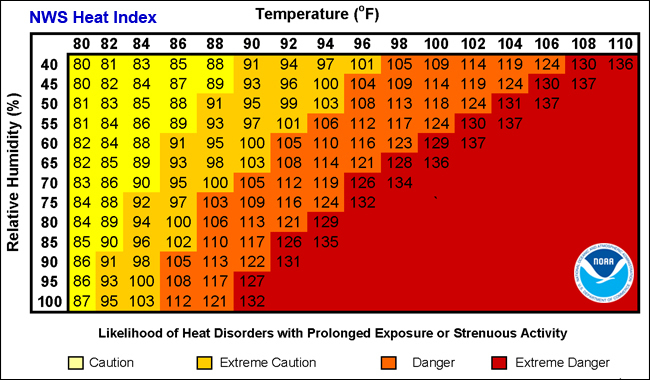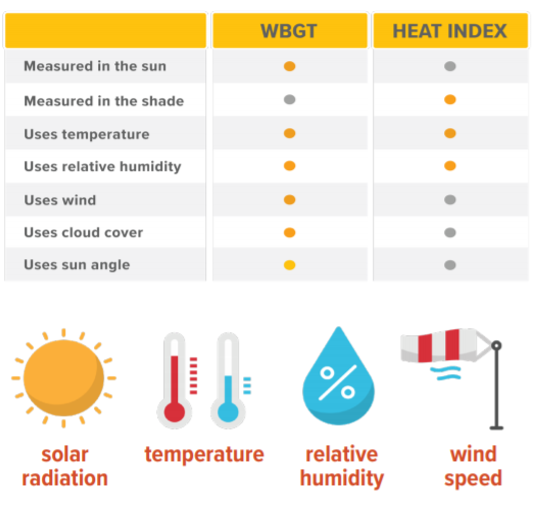
With the first true heat wave of 2025 upon us, now is a great time to take a look at the heat index as well as review some heat safety tips.
What is the Heat Index?
Over the past couple decades, the heat index has gained popularity in use among the public and meteorologists. In layman’s terms, the heat index takes the temperature and moisture, and spits out what the apparent temperature is as far as our bodies are concerned. The simple, but ridiculously long formula looks like this:
Heat Index = -42.379 + 2.04901523T + 10.14333127R – 0.22475541TR – 6.83783 x 10-3T2 – 5.481717 x 10-2R2 + 1.22874 x 10-3T2R + 8.5282 x 10-4TR2 – 1.99 x 10-6T2R2
where T=Temperature and R=Relative humidity
If you don’t feel like doing the math (which who does?), the chart below breaks it down for you. As long as you know the air temperature and relative humidity,

So it’s hot and humid, why do we care?
Aside from it feeling absolutely miserable, there is very good reason to pay close attention to the heat and humidity.
The human body runs at around 98.6º, give or take a bit, but outside temperatures of 98.6º can be deadly. If this seems counter-intuitive, you are sort of correct. However, the human body is always working to cool itself off. In the right conditions, our body can quickly heat up beyond its safe operating range. By far the most effective thing the body does to cool itself is sweat.
When we sweat, our body is counting on that water evaporating. In order to get a molecule of water to evaporate, you have to add heat to it. Thus, when our sweat evaporates it takes a little bit of heat with it, something us fancy scientists call the latent heat of evaporation. Unfortunately, there is a point where the amount of water evaporating doesn’t do enough to cool us off.
In the southeast US, we are often in a very moist airmass during the summer. Relative humidity values rarely drop below 45-50% during the hottest part of the day, and higher readings are common. Because of the amount of moisture in the air, sweating isn’t always very productive as the water has a hard time evaporating. The opposite is true out west, hence the term “dry heat”.
Weather forecasters have a second term, called the Wet Bulb Globe Temperature, that they use to determine what the risk for heat related illness is. It works much like the heat index, but instead temperatures are taken in direct sunlight. Winds and cloud cover are also factored in. Because we often aren’t working in a perfect shaded environment like most official thermometers, this WBGT is more effective for risk, albeit a bit more complicated to understand. Studies have shown that at a WBGT of 95º, the body begins to struggle cooling itself and heat exhaustion and heat stroke become much more common.

How to stay safe in the heat
Here’s a few tips on how to beat the heat over the coming weeks.
- Avoid working in direct sun during the hottest part of the day; generally 12-6PM
- Wear light clothing
- Drink plenty of water
- Take frequent breaks, particularly if working in direct sunlight
- Pay attention to signs of heat exhaustion or heat stroke
For a full look at heat safety tips, see the article below that goes into much more detail!






